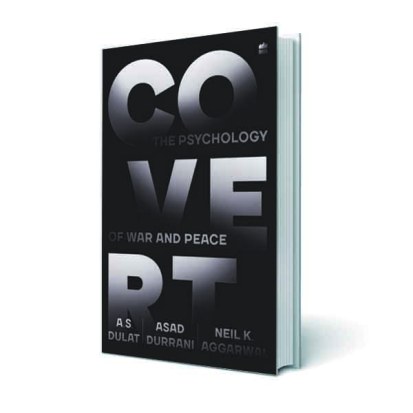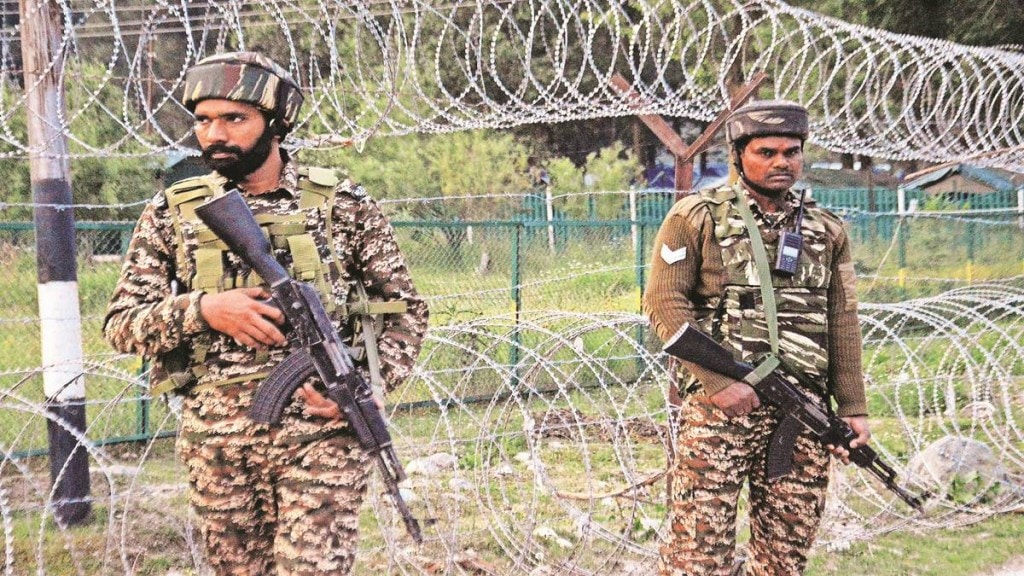Spy chiefs generally live in the shadows and it is not often that they author books about their professional trajectory and much less do they write sequels. But there are the rarest of rare exceptions—and the book under review falls into that category.
Covert is a sequel to the 2018 The Spy Chronicles which was authored by AS Dulat and Asad Durrani (along with Aditya Sinha), and even at that time, this was a very radical departure. For those not familiar with South Asian politics and security matters, two decades ago, Dulat and Durrani were the national intelligence czars of their nations—India and Pakistan, respectively—and were arch rivals who also developed a healthy and empathetic respect for each other’s professionalism and humanism. Perhaps the fact that they both spoke Punjabi may have also helped.
When The Spy Chronicles was published, it created ripples in India and a tsunami in Pakistan. Durrani, a former three-star general of the Pakistani army and ISI chief, was found guilty of having revealed numerous state secrets, including institutional complicity in the killing of Osama bin Laden. An incensed GHQ in Rawalpindi imposed harsh penalties and strictures on their former senior colleague, including stoppage of pension, and General Durrani was vengefully ostracised by the ‘deep state’ in Pakistan.
The intrepid Durrani was not cowed and he wrote a fictional account, Honor Among Spies, in 2021 to clear his name and more skeletons tumbled from the Rawalpindi cupboard. However, given the domestic political turbulence in Pakistan (PM Imran Khan versus Army Chief General Bajwa, et al), the author was progressively rehabilitated.The stir created in professional circles by the candid Dulat-Durrani exchanges resulted in senior psychoanalysts and conflict resolution specialists convening meetings to discuss The Spy Chronicles at the behest of Dr Neil Krishan Aggarwal, a psychiatrist and researcher at Columbia University. This was the seed for Covert, which emerged from a series of candid conversations among the former spy chiefs and the shrink—Aggarwal.
Given the academic intervention, this is an unusual book—in that it is not just the transcript of an extended Dulat-Durrani conversation but one that nestles at the intersection of three disciplines: “cultural psychiatry, psychiatric anthropology and South Asian studies.” The authors add that through this book, they “wanted to make contributions in two main areas: (1) using psychiatry and psychology to understand conflict, intelligence and peacemaking, and (2) offering specific, practical strategies for peace-building between India and Pakistan.”
Drawing upon some basic postulates of conflict resolution, peace building and Track II diplomacy, the book follows the sequel format in an engaging manner. Divided into five chapters, it reviews ‘life after’ the publication of The Spy Chronicles; the psychological foundations of Track II people-to-people diplomacy; case studies in how we become Indians and Pakistanis; why making peace can be as hard as war; and an ‘honest’ assessment of future peacemaking.The tone of the conversations is unhurried and reflective and through the personal life trajectories of the main protagonists—Dulat and Durrani—important historical punctuations are placed in context to explain the intractable conflict dynamic in the India-Pakistan relationship. Kashmir becomes the symbol of this deeply embedded discord and inter-state hostility and in a succinct summary Aggarwal notes: “What is plain is that you both view your bureaucratic establishments as entrenching differences rather than overcoming them, so our challenge now is to find ideas that could promote peacemaking.”
Many interesting and instructive nuggets are strewn in the course of these conversations and they range from film-hungry Pakistanis thronging shops in the aftermath of the 1971 war for Bangladesh to view Mughal-e-Azam that was being telecast on the Indian side of the border (Durrani talks about his fit of rage that soon after India surgically dismembered Pakistan, “our people were closing down business to watch an Indian film.”) to issues of medical tourism and the reputation that foreign minister Sushma Swaraj acquired in granting medical visas to Pakistanis as a humanitarian gesture.

General Durrani sheds valuable light as regards the view from the other side apropos the March 2022 incident where an Indian missile ‘accidentally’ landed in Pakistan. Contrary to the standard operating procedures when ‘enemy’ missiles are detected, the Pakistan military did not respond in panic or anger and a nuclear catastrophe was averted. In Durrani’s words, “The lucky part was that someone on the Pakistani side was sleeping at the wheel” and opines that the “mischief on the Indian side was by design”.
Dulat and Durrani provide some candid assessments about their respective security and diplomatic establishments and the bilateral relationship and based on his personal experience the former Indian RAW chief avers: “Having watched Track II—diplomats are not the easiest people to talk to. They think that it is part of their business to oppose things rather than find solutions.”
The last chapter seeks to provide some initiatives of substantive import for both sides, viz: each society must a) change its goals; b) change its beliefs about the adversary; and c) change its beliefs about itself. These are ontological recommendations and strike at the very roots of the imagined identity, aspirations and anxieties of both states and their societies. Alas, in the current context their desirability and feasibility are inversely proportional.
Aggarwal identifies some low-hanging-fruit to improve the texture of the bilateral relationship and here combating drug trafficking and religious tourism are highlighted. However, as Dulat points out to his psychiatrist interlocutor: “I know that you want to see a positive ending. But we’d be lying to ourselves and to each other if we didn’t recognize that a lot has changed in the past four years, since The Spy Chronicles. It’s a different world in here.”
Shakespeare is invoked often in the course of the conversations and Dulat pensively dwells on the challenge of creating hope ‘where there is no hope’ but the reality check points more to Albert Camus and the Sisyphean myth. The Kashmir rock invariably rolls down even as the elusive peace on the mountain top seems to be in reach.
C Uday Bhaskar is director, Society for Policy Studies
Covert: The Psychology of
War and Peace
AS Dulat, Asad Durrani, Neil K Aggarwal
HarperCollins
Pp 256, Rs. 699








